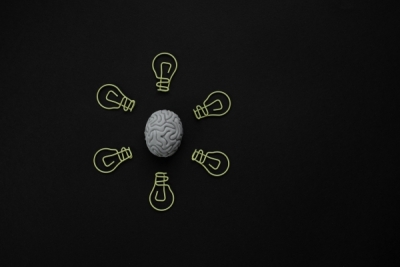Estrogen and Alcohol Consumption in Women: Hormonal Interactions and Health Risks
Estrogen and Alcohol Consumption in Women: Hormonal Interactions and Health Risks
Estrogen plays a key role in the neurobiological responses to alcohol in women. Recent evidence shows that hormonal fluctuations throughout the menstrual cycle and across a woman’s lifespan can influence alcohol sensitivity, drinking patterns, and the associated health risks.
Estrogen and the Brain’s Reward System
Preclinical and clinical studies indicate that estrogen amplifies dopamine effects in brain areas associated with the reward system, such as the striatum and prefrontal cortex. This may increase women's vulnerability to developing alcohol use disorders, especially during life phases with elevated estrogen levels—such as ovulation, pregnancy, or during hormone therapy.¹
1. Effect of Alcohol Use on Estradiol
Estradiol is a steroid hormone and a primary form of estrogen, produced mainly in the ovaries in women and in smaller amounts in the testes in men. Studies suggest that alcohol consumption can raise estradiol levels in women—a phenomenon observed in both reproductive-age and postmenopausal women.
Some research shows that women who consume one or more alcoholic drinks per day have higher estradiol levels than those who drink less, particularly when hormone levels are measured during the luteal phase of the menstrual cycle.² ³ Conversely, women with alcohol use disorder (AUD) who are undergoing treatment or are in early abstinence often present lower estradiol levels compared to women without AUD.⁴
2. Impact of Estradiol on Alcohol Use
High estradiol levels appear to increase women's vulnerability to alcohol use. The hormone affects brain regions involved in reward processing, such as the striatum and the nucleus accumbens.
A study by Martel et al. (2017), involving 22 reproductive-age women, found that higher estradiol levels were associated with greater alcohol consumption and more binge drinking episodes. This association was strongest when estradiol levels were high and progesterone levels were low—a hormonal pattern typical of the ovulatory phase of the menstrual cycle.⁵
Conclusion and Research Gaps
While current evidence highlights a significant interaction between estradiol levels and alcohol use in women, the underlying physiological mechanisms remain incompletely understood. Experimental and longitudinal studies are still needed to clarify how estradiol influences the neurobiology of reward and vulnerability to alcohol use, as well as how alcohol affects endocrine function across different stages of a woman’s life.
References:
- Handy, A. B., Greenfield, S. F., & Payne, L. A. (2025). Estrogen and alcohol use in women: a targeted literature review. Archives of women's mental health, 28(1), 81–93. https://doi.org/10.1007/s00737-024-01483-9biobehavioral reviews, 128, 648–660. https://doi.org/10.1016/j.neubiorev.2021.07.010
- Lucero J, Harlow BL, Barbieri RL, Sluss P, Cramer DW (2001) Early follicular phase hormone levels in relation to patterns of alcohol, tobacco, and coffee use. Fertil Steril 76(4):723–729. https://doi. org/10.1016/s0015-0282(01)02005-2
- Schliep KC, Zarek SM, Schisterman EF, Wactawski-Wende J, Trev- isan M, Sjaarda LA, Perkins NJ, Mumford SL (2015) Alcohol intake, reproductive hormones, and menstrual cycle function: a prospective cohort study. Am J Clin Nutr 102(4):933–942. https:// doi.org/10.3945/ajcn.114.102160
- Mühle C, Barry B, Weinland C, Kornhuber J, Lenz B (2019) Estrogen receptor 1 gene variants and estradiol activities in alcohol depen- dence. Prog Neuropsychopharmacol Biol Psychiatry 92:301–307. https://doi.org/10.1016/j.pnpbp.2019.01.008
- Martel MM, Eisenlohr-Moul T, Roberts B (2017) Interactive effects of ovarian steroid hormones on alcohol use and binge drinking across the menstrual cycle. J Abnorm Psychol 126(8):1104–1113. https://doi.org/10.1037/abn0000304




